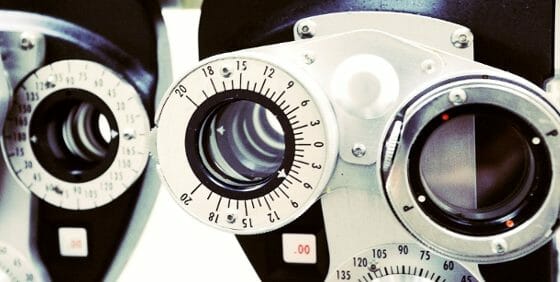What Other Tests Do Optometrists Conduct?

In our first installment of common eye examinations and test varieties, we discussed the basic tests that patients might commonly be exposed to. This included Applanation Tonometry to diagnose glaucoma; Corneal Topography, which is used to create a map of the retina’s surface; a Dilated Pupillary exam, which many patients will recall from previous visits to the eye doctor, when their eyes were “dilated”; and the Slit-Lamp exam, which can assist an eye doctor in determining the presence of cataracts, or macular degeneration.
In this follow-up post, we discuss a few other tests that an optometrist may perform, and the reasons behind the examinations or procedures. Make sure to always speak directly with a licensed, professional optometrist to learn more about these examinations.
Common Eye Tests and the Reasons They Are Often Required
Refraction: This basic examination is used to help your doctor to determine what prescription will be required for your eyeglasses. Have you ever looked at an eye chart from several feet away? Perhaps your doctor used a special mirror that created a forced version of the distance, without you having to actually back up 20 feet from the wall. An optometrist typically has patients look through a phoropter, while moving various lenses into place. Patients will be asked to determine when the images in front of them appear blurry or clear, until the correct prescription for contact lenses or glasses has been determined. Common eye conditions like astigmatism, myopia and presbyopia can also be identified through Refraction.
Fluorescein Angiogram: This eye test is directed towards a better understanding of how blood circulates in the retina of the eye, which can help an optometrist to diagnose conditions ranging from AMD to basic retinal detachment. Fluorescein is a special dye that your optometrist will typically inject into a vein (commonly in the arm) in order to conduct this test. The dye quickly makes its way to the eye’s blood vessels, whereupon your optometrist uses a special camera to highlight the fluorescein located at the back of the eye. The test is often used to diagnose things like problems with circulation in the eye.
Non-Contact Tonometry: Non-contact Tonometry is a test that eye doctors employ in order to diagnose glaucoma. Named after the instrument used in the process (a tonometer), pressure is measured in the eye via a puff of air, allowing the optometrist to indirectly measure the eye’s resistance.
[Photo Via: Metropolitan Optical]

